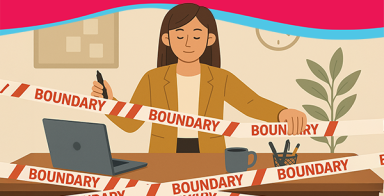PTSD can significantly impact the workplace’s psychological health and safety by compromising someone’s ability to function effectively. PTSD can affect people of all ages and backgrounds and profoundly impact their emotional, psychological, and physical well-being. Not everyone who experiences trauma will develop PTSD, but for those who do, the symptoms can be severe and persistent.
Symptoms of PTSD (The symptoms of PTSD typically fall into four main categories):
- Intrusive memories: People with PTSD may experience recurring and distressing memories of the traumatic event. Intrusive memories can include vivid nightmares, flashbacks, or intrusive thoughts that can be challenging to control.
- Avoidance: To cope with distressing memories and emotions, individuals with PTSD may try to avoid anything that reminds them of the traumatic event. This avoidance can extend to thoughts, feelings, places, people, or activities associated with the trauma.
- Negative changes in thoughts and mood: PTSD can lead to adverse changes in a person’s beliefs about themselves, others, or the world. They may experience feelings of guilt, shame, or persistent fear. Additionally, individuals with PTSD may have difficulty experiencing positive emotions and feel emotionally detached or numb.
- Hyperarousal: People with PTSD often experience increased arousal or vigilance, making them easily startled, irritable, or prone to angry outbursts. They may have trouble sleeping or concentrating and feel constantly on edge.
Duration and Impact:
PTSD symptoms can start shortly after the traumatic event or take weeks, months, or even years to develop. The severity and duration of symptoms can vary from person to person, and the condition can significantly interfere with daily life, relationships, and work.
**It’s important to note that everyone responds to trauma differently, and these signs may manifest in varying degrees. Additionally, the symptoms of trauma and PTSD can overlap with other mental health conditions. Hence, a comprehensive assessment by a qualified mental health professional is crucial for accurate diagnosis and appropriate support. If you suspect that someone may be experiencing PTSD or trauma, it’s essential to approach them with empathy and understanding. Encourage them to seek professional help and support them throughout their recovery journey. Remember that healing from trauma is a process that requires patience, compassion, and a supportive network.**
How to cope with PTSD
Coping with PTSD (Post-Traumatic Stress Disorder) can be challenging. Still, there are various strategies that individuals can use to manage their symptoms and improve their well-being. Here are ten effective coping strategies:
- Seek professional help: Reach out to a qualified mental health professional, such as a therapist or counsellor, experienced in treating PTSD. Therapy, such as cognitive-behavioural therapy (CBT) or eye movement desensitization and reprocessing (EMDR), can be highly beneficial in processing trauma and developing coping skills. You can connect with your EFAP (Employee and Family Assistance Program), Wellness Together Canada, for free counselling support or the Mental Health Support Line at 310-6789
- Build a support system: Surround yourself with understanding and supportive friends, family members, or support groups to provide a network of people who can listen without judgment and offer emotional support.
- Practice relaxation techniques: Engage in relaxation practices such as deep breathing, progressive muscle relaxation, or mindfulness meditation. These techniques can help reduce stress and anxiety associated with PTSD.
- Physical exercise: Regular physical activity can alleviate symptoms of PTSD. Whether it’s jogging, yoga, swimming, or any other form of exercise, staying active can boost mood and overall well-being.
- Limit substance use: Avoid using drugs or alcohol to cope with PTSD symptoms. Substance use can exacerbate the problem and prevent effective healing.
- Educate yourself about PTSD: Understanding PTSD and its symptoms can empower individuals to manage their condition better. Knowledge about the disorder can also reduce self-blame and enhance self-compassion.
- Establish a routine: Structure and predictability can help provide stability for individuals with PTSD. Work to establish a daily routine that includes self-care activities, work or hobbies, and time for relaxation.
- Express emotions creatively: Explore creative outlets like art, writing, or music to express feelings related to the trauma. Creative expression can be therapeutic and facilitate emotional healing.
- Challenge negative thoughts: Be mindful of negative thought patterns and try to challenge them. Cognitive restructuring techniques can help individuals replace negative thoughts with more balanced and positive ones.
- Avoid triggers: Identify triggers that exacerbate PTSD symptoms and try to avoid them when possible. If encountering triggers is unavoidable, develop coping strategies to manage the resulting emotional distress.
It’s important to remember that coping with PTSD is a personal journey, and not all strategies work the same for everyone. It may take time to find the most effective combination of techniques. Seeking professional guidance and staying patient with oneself is vital throughout the healing process.
What you can do as an organization
Post-Traumatic Stress Disorder (PTSD) and trauma can profoundly impact an individual’s psychological health, especially in the workplace. Recognizing and addressing these issues is crucial for fostering a psychologically safe work environment in the health sector. Here are some key strategies and coping skills to promote mental well-being and support those affected by PTSD and trauma in the workplace.
- Create a Supportive Work Environment
- Encourage open communication: Foster a culture where employees feel comfortable discussing their mental health challenges without fear of judgment or stigma. Provide accessible channels for confidential communication, such as Employee Assistance Programs (EAPs) or anonymous reporting systems.
- Educate managers and employees: Train managers and staff to recognize the signs of PTSD and trauma and respond with empathy and understanding. Awareness workshops and training sessions can play a pivotal role in reducing the stigma surrounding mental health.
- Flexible work arrangements: Offer flexible schedules or remote work options to accommodate employees needing extra time to cope with their trauma or attend therapy sessions.
- Self-Care and Coping Strategies
- Mindfulness and meditation: Encourage employees to practice mindfulness and meditation techniques to manage stress and anxiety. These practices can help individuals stay grounded and improve their emotional resilience.
- Physical exercise: Regular physical activity can be beneficial for managing PTSD symptoms and promoting overall well-being. Consider organizing workplace wellness programs or offering gym memberships to support employees in maintaining an active lifestyle.
- Creative outlets: Encourage using creative outlets such as art therapy, journaling, or music to express emotions and cope with trauma. These activities can be therapeutic and facilitate emotional processing.
- Trauma-Informed Practices
- Trauma sensitivity training: Provide specialized training for managers and colleagues to understand trauma and its effects on individuals better. This training can help avoid triggering situations and foster a more empathetic and supportive workplace.
- Establish clear boundaries: Set clear boundaries in the workplace to prevent situations that might retraumatize individuals. Boundaries include respecting personal space, avoiding intrusive questions, and ensuring confidentiality.
- Recognize accomplishments: Acknowledge and celebrate employees’ achievements, no matter how small they may seem. Recognizing their contributions and growth can boost self-esteem and resilience.
By implementing strategies that create a supportive environment, fostering self-care and coping skills, and adopting trauma-informed practices, organizations can play a crucial role in helping employees recover from trauma and maintain overall well-being. A compassionate and understanding workplace culture is vital to building a resilient and mentally healthy workforce.
PTSD stands for post-traumatic stress disorder. It is a mental health condition that can develop in some individuals after experiencing or witnessing a traumatic event. Trauma refers to an event that is distressing, shocking, or life-threatening. It can include experiences such as physical violence, sexual assault, natural disasters, accidents, combat exposure, or the sudden loss of a loved one.
PTSD can significantly impact the workplace’s psychological health and safety by compromising someone’s ability to function effectively. PTSD can affect people of all ages and backgrounds and profoundly impact their emotional, psychological, and physical well-being. Not everyone who experiences trauma will develop PTSD, but for those who do, the symptoms can be severe and persistent.
Symptoms of PTSD (The symptoms of PTSD typically fall into four main categories):
- Intrusive memories: People with PTSD may experience recurring and distressing memories of the traumatic event. Intrusive memories can include vivid nightmares, flashbacks, or intrusive thoughts that can be challenging to control.
- Avoidance: To cope with distressing memories and emotions, individuals with PTSD may try to avoid anything that reminds them of the traumatic event. This avoidance can extend to thoughts, feelings, places, people, or activities associated with the trauma.
- Negative changes in thoughts and mood: PTSD can lead to adverse changes in a person’s beliefs about themselves, others, or the world. They may experience feelings of guilt, shame, or persistent fear. Additionally, individuals with PTSD may have difficulty experiencing positive emotions and feel emotionally detached or numb.
- Hyperarousal: People with PTSD often experience increased arousal or vigilance, making them easily startled, irritable, or prone to angry outbursts. They may have trouble sleeping or concentrating and feel constantly on edge.
Duration and Impact:
PTSD symptoms can start shortly after the traumatic event or take weeks, months, or even years to develop. The severity and duration of symptoms can vary from person to person, and the condition can significantly interfere with daily life, relationships, and work.
**It’s important to note that everyone responds to trauma differently, and these signs may manifest in varying degrees. Additionally, the symptoms of trauma and PTSD can overlap with other mental health conditions. Hence, a comprehensive assessment by a qualified mental health professional is crucial for accurate diagnosis and appropriate support. If you suspect that someone may be experiencing PTSD or trauma, it’s essential to approach them with empathy and understanding. Encourage them to seek professional help and support them throughout their recovery journey. Remember that healing from trauma is a process that requires patience, compassion, and a supportive network.**
How to cope with PTSD
Coping with PTSD (Post-Traumatic Stress Disorder) can be challenging. Still, there are various strategies that individuals can use to manage their symptoms and improve their well-being. Here are ten effective coping strategies:
- Seek professional help: Reach out to a qualified mental health professional, such as a therapist or counsellor, experienced in treating PTSD. Therapy, such as cognitive-behavioural therapy (CBT) or eye movement desensitization and reprocessing (EMDR), can be highly beneficial in processing trauma and developing coping skills. You can connect with your EFAP (Employee and Family Assistance Program), Wellness Together Canada, for free counselling support or the Mental Health Support Line at 310-6789
- Build a support system: Surround yourself with understanding and supportive friends, family members, or support groups to provide a network of people who can listen without judgment and offer emotional support.
- Practice relaxation techniques: Engage in relaxation practices such as deep breathing, progressive muscle relaxation, or mindfulness meditation. These techniques can help reduce stress and anxiety associated with PTSD.
- Physical exercise: Regular physical activity can alleviate symptoms of PTSD. Whether it’s jogging, yoga, swimming, or any other form of exercise, staying active can boost mood and overall well-being.
- Limit substance use: Avoid using drugs or alcohol to cope with PTSD symptoms. Substance use can exacerbate the problem and prevent effective healing.
- Educate yourself about PTSD: Understanding PTSD and its symptoms can empower individuals to manage their condition better. Knowledge about the disorder can also reduce self-blame and enhance self-compassion.
- Establish a routine: Structure and predictability can help provide stability for individuals with PTSD. Work to establish a daily routine that includes self-care activities, work or hobbies, and time for relaxation.
- Express emotions creatively: Explore creative outlets like art, writing, or music to express feelings related to the trauma. Creative expression can be therapeutic and facilitate emotional healing.
- Challenge negative thoughts: Be mindful of negative thought patterns and try to challenge them. Cognitive restructuring techniques can help individuals replace negative thoughts with more balanced and positive ones.
- Avoid triggers: Identify triggers that exacerbate PTSD symptoms and try to avoid them when possible. If encountering triggers is unavoidable, develop coping strategies to manage the resulting emotional distress.
It’s important to remember that coping with PTSD is a personal journey, and not all strategies work the same for everyone. It may take time to find the most effective combination of techniques. Seeking professional guidance and staying patient with oneself is vital throughout the healing process.
What you can do as an organization
Post-Traumatic Stress Disorder (PTSD) and trauma can profoundly impact an individual’s psychological health, especially in the workplace. Recognizing and addressing these issues is crucial for fostering a psychologically safe work environment in the health sector. Here are some key strategies and coping skills to promote mental well-being and support those affected by PTSD and trauma in the workplace.
- Create a Supportive Work Environment
- Encourage open communication: Foster a culture where employees feel comfortable discussing their mental health challenges without fear of judgment or stigma. Provide accessible channels for confidential communication, such as Employee Assistance Programs (EAPs) or anonymous reporting systems.
- Educate managers and employees: Train managers and staff to recognize the signs of PTSD and trauma and respond with empathy and understanding. Awareness workshops and training sessions can play a pivotal role in reducing the stigma surrounding mental health.
- Flexible work arrangements: Offer flexible schedules or remote work options to accommodate employees needing extra time to cope with their trauma or attend therapy sessions.
- Self-Care and Coping Strategies
- Mindfulness and meditation: Encourage employees to practice mindfulness and meditation techniques to manage stress and anxiety. These practices can help individuals stay grounded and improve their emotional resilience.
- Physical exercise: Regular physical activity can be beneficial for managing PTSD symptoms and promoting overall well-being. Consider organizing workplace wellness programs or offering gym memberships to support employees in maintaining an active lifestyle.
- Creative outlets: Encourage using creative outlets such as art therapy, journaling, or music to express emotions and cope with trauma. These activities can be therapeutic and facilitate emotional processing.
- Trauma-Informed Practices
- Trauma sensitivity training: Provide specialized training for managers and colleagues to understand trauma and its effects on individuals better. This training can help avoid triggering situations and foster a more empathetic and supportive workplace.
- Establish clear boundaries: Set clear boundaries in the workplace to prevent situations that might retraumatize individuals. Boundaries include respecting personal space, avoiding intrusive questions, and ensuring confidentiality.
- Recognize accomplishments: Acknowledge and celebrate employees’ achievements, no matter how small they may seem. Recognizing their contributions and growth can boost self-esteem and resilience.
By implementing strategies that create a supportive environment, fostering self-care and coping skills, and adopting trauma-informed practices, organizations can play a crucial role in helping employees recover from trauma and maintain overall well-being. A compassionate and understanding workplace culture is vital to building a resilient and mentally healthy workforce.










